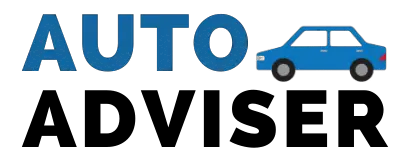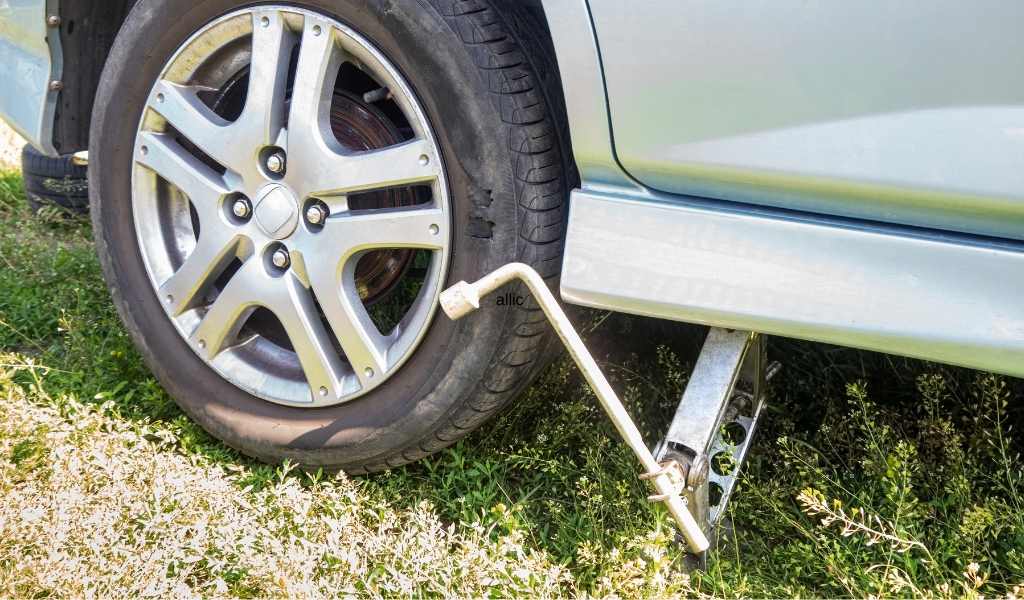Disclosure: As an affiliate I may earn a commission on any qualifying purchases, including those from Amazon, at no extra cost to you -read more
Jacking a car up may seem like a simple task when you’re in the ideal place with all of the correct tools. But life doesn’t always work that way and you may be in a situation where you have to change a tyre on unsteady surfaces such as grass, gravel or soft ground. Is this safe?
No, it’s not safe to jack up your car on grass, gravel or soft ground as jacks are designed to be used on solid, level surfaces. If you are left with no choice, using a piece of wood and wheel chocks can help with balance, although you shouldn’t work under the car.
In the rest of this guide, we’ll share some considerations before jacking your car up, along with tips for each of the aforementioned surfaces.
Can You Jack Up a Car on Gravel?
Jacking a car up on gravel is not ideal as you should always use a car jack on a flat, smooth surface such as a pavement or driveway. One of the biggest risks here is that the car or jack will move whilst the vehicle is jacked up, this will result in the car falling off the jack and causing a lot of damage.
However, there are also other issues such as losing essential parts in the gravel (such as bolts or sockets) and the fact that the gravel can be very uncomfortable to work on.
If you have no choice but to jack up a car on gravel, here are some tips on how to do so safely:
- Find an even spot – if there is a spot of gravel which is more even than other parts, move the vehicle to this part, as it will make the whole process easier and safer.
- Use wheel chocks to steady wheels – this make sure the wheels that are left on the ground do not move around. It’s a good idea to keep a wheel chock in your car, but otherwise you can find some nearby rocks or blocks of wood.
- Place a piece of wood under the jack – assuming you don’t have a jack stand, it’s a good idea to place a flat piece of wood under the jack to keep it stable. This is especially important if you’re using a scissor jack which has a single point of contact with the ground. The wood also helps catch any parts that you may drop and stops them getting lost int he gravel.
- Do not go under the car – basic repairs such as changing a flat tyre are okay as you can do this with little risk to yourself, however yo should never work under the vehicle unless it is jacked up on a solid surface with jack stands in place.
If in doubt, seek help from a professional such as a breakdown company or local garage. The cost of this will be cheaper than any potential damage you may cause to the vehicle.
Can You Jack Up a Car on Grass or Soft Ground?
Jacking up a vehicle on softer ground such as grass or dirt poses a different type of risk as the ground could give way whilst the vehicle is lifted and create a lot of damage.
Dried surfaces tend to be more stable so you have less risk of sudden movement, however it may still sink or subside at a slower rate.
If you want to see what can happen when a vehicle is unsafely jacked up on grass, watch this YouTube video:
Sometimes we don’t have a choice about when and where our cars need to be jacked up. Here are some tips to safely jack up your vehicle on grass or soft ground:
- Do not attempt on wet grass or dirt – find a dry, even spot to jack the car as this tends to be much sturdier and unlikely to give way. If the ground is very wet, you should not attempt to lift the car.
- Use wheel chocks – to reduce the risk of the car moving whilst lifted, place wheel chocks under the other wheels. You can use nearby rocks on blocks of wood as a wheel chock if you don’t have any.
- Place a piece of tarp over the area you will be working – this will stop you getting dirty and also makes it easier to find any bolts or sockets you may drop.
- Use a piece of wood under the jack – place a flat piece of board or plywood on the grass where you will use the jack. Ideally this would be at least 10mm thick, but anything is better than nothing.
- Use axle stands if possible – if you have axel stands to hand, these would prove useful to add more stability to the vehicle in addition to the jack. Remember that you will need to place wood under these too.
- Don’t work under the vehicle – under no circumstances should you attempt to work under the vehicle whilst it’s jacked up on grass or dirt. For basic repairs this should not be an issue anyway.
If the ground is very wet or you have other concerns, we’d recommend you call for professional help such as a breakdown service.
Alternative Places You Can Work on Your Car
If a car is able to be moved to a safer spot to be jacked up, then it is a good idea to do this, as it will make the whole jacking process safer and smoother. Here are some examples of where a vehicle can safely be jacked up:
Roadside: If you have a gravel driveway (or no driveway at all), you may be able to move your vehicle to a nearby roadside providing there is little-to-no traffic. There are no laws that prevent you from doing this as long as you don’t block the road. You should only work on the side of the vehicle away from traffic.
Storage Unit: A storage unit is a safe place to jack up the car, this is because it is off road and a storage unit’s floor is usually smooth and flat, which is ideal for jacking up a vehicle safely. Because of the smooth, flat surface and the big floor space, a trolley jack can be used, and this is a very sturdy and efficient type of jack to use.
Friend’s house: If a friend has a ground space which is flat and big enough to jack a car upon, then this is a good place to jack up a car. This could either be their garage or their drive way, either way if your friend is OK with it, then it’s a safe space to consider.
Rent a drive way: Equally, if you and you friends and family don’t have a sufficient space to jack a car up on, there are a number of services to rent out parking spaces in the UK such as Park Let.
Featured image credit: Canva Pro

Ellie used to work in a Vauxhall dealership but has now turned her passion to writing about cars instead. Ellie currently drives a Corsa but as an electric vehicle fanatic has her hopes on one day owning a Tesla. It will, of course, be grey as she only ever owns grey cars.

